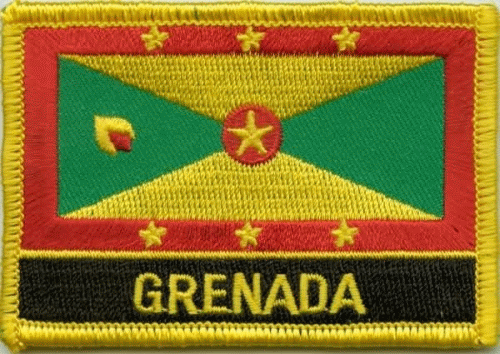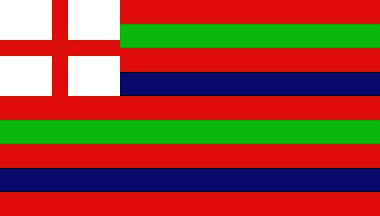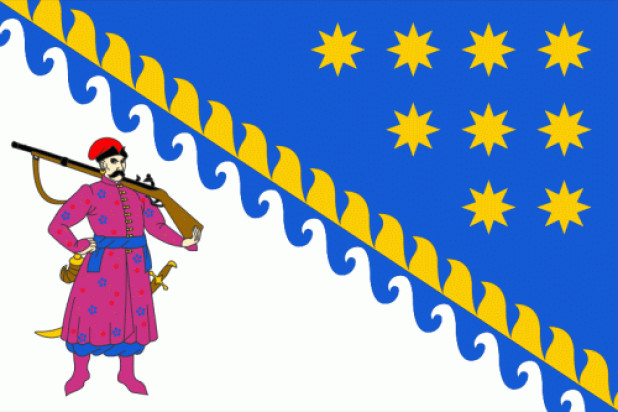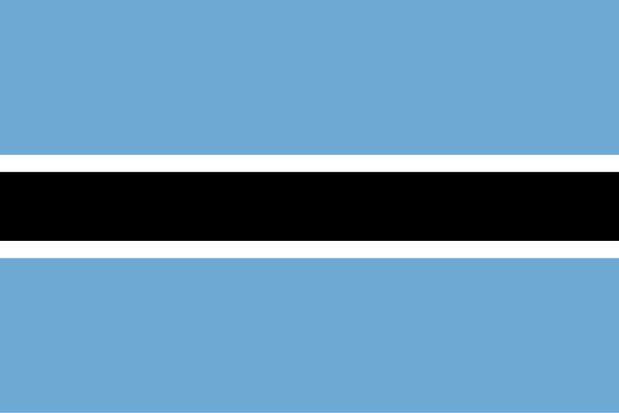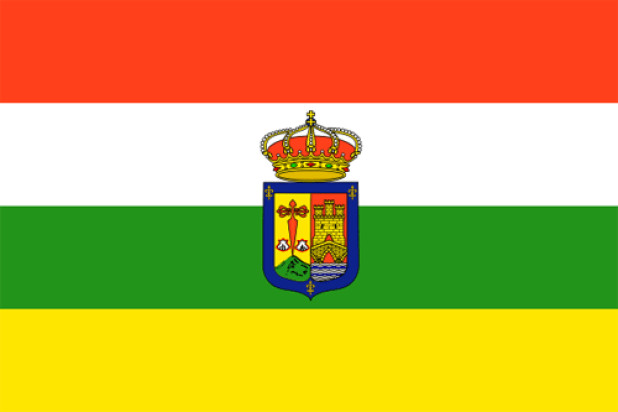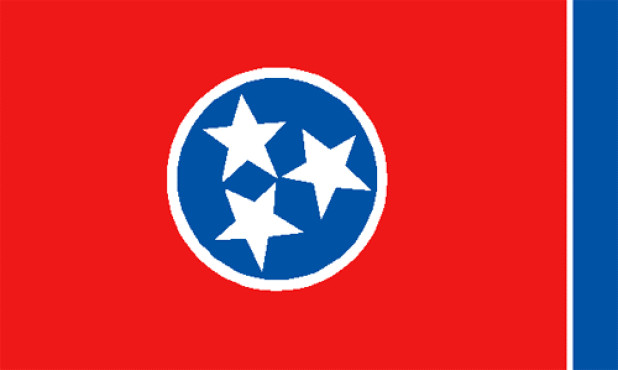Flag of Great Britain
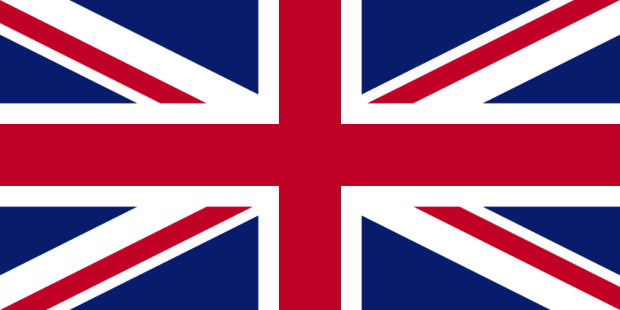
Listen to anthem
Top sellers from our flag shop
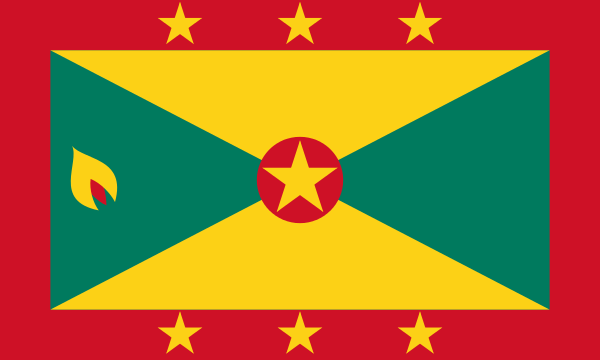
Grenada Flagge 90x150 cm
9,90 €
Show in shop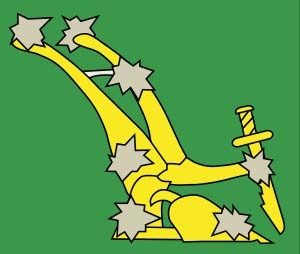
STARRY PLOUGH GREEN 90x150 cm
9,90 €
Show in shopBackground knowledge
"Union Jack" is the traditional name of the national flag of the United Kingdom of Great Britain and Northern Ireland; officially it is also called "Union Flag". The flag has been flown in its current form since 1801.
Design of the British flag
The Union Jack represented an overlay of the English flag (red cross on a white background, known as St. George's Cross), the Scottish flag (white St. Andrew's Cross on a blue background), and the Irish flag (red St. Andrew's Cross on a white background, known as St. Patrick's Cross).
Origin of the flag Great Britain
The Union Jack was first introduced under King James I in 1606 as a result of the personal union between Scotland and England[2] and was used until 1649. In its original form, it represented only an overlay of the flags of England and Scotland.
After the English Civil War, the flag of England was supplemented by the Irish Harp until 1654, which was in the center of the flag until 1660.
Then from 1660 to 1801 the original Union Jack was used again. In 1707, the final union of Scotland and England took place in the Act of Union 1707.
In 1801, with the political integration of the neighboring island of Ireland, the then Irish flag was also incorporated into the Union Jack.
The asymmetry of the Union Jack stems from the fact that the Scottish St. Andrew's Cross and the Irish St. Patrick's Cross are supposed to stand "next to each other" with equal rights. Heraldically, this is achieved by not superimposing the corresponding symbols centrally, but by "shifting" them against each other. The English St. George's Cross, for example, lies centrally on top of all the other crosses, symbolizing England's dominance over the countries of Scotland and Ireland.
In 1809, the Union Jack was declared the British national flag by Parliament.
The flag of Wales, on the other hand, has never been included in the Union Jack, as Wales was annexed to England by the Act of Union in 1536, long before the founding of the United Kingdom; however, designs exist for a Union Jack with the Welsh Cross of David (yellow cross on a black background). In 2007, UK Culture Secretary Margaret Hodge did not rule out a redesign.
Designation Union Jack
The name "Jack" refers to its original use as a bow flag on (war) ships under Charles II (in German: "Gösch"). Other explanations of the name are that "Jack" derives from soldiers' clothing or the name of James I, who introduced this flag in its original form.
Source: Wikipedia
Hymn
God save the queen:
God save our noble queen!
Long live our noble queen!
God save the queen!
Make her victorious,
Happy and glorious,
That she may reign long over us.
God save the queen!
O Lord our God, arise,
Drive your enemies apart
And then bring them down.
Let their political intentions fail,
Thwart their villainous plans.
On this we base our hope!
God save us all.
Lord, You who are able to do everything,
We beseech Thee, be merciful to our queen
And let her reign for a long time!
That she may defend our right
And may always give us cause
To sing with all our heart and strong voice:
God save our Queen!
British flag color codes
- HEX
- #FFFFFF
- RGB
- 255, 255, 255
- CMYK
- 0, 0, 0, 0
- RAL
- 9010
- HEX
- #C8102E
- RGB
- 200, 16, 46
- CMYK
- 0, 100, 80, 5
- RAL
- 3028
- Pantone
- 186
- HEX
- #012169
- RGB
- 1, 33, 105
- CMYK
- 100, 85, 0, 39
- RAL
- 5026
- Pantone
- 280
That's what ChatGPT knows about the flag of Great Britain
-
The national flag of Great Britain is also known as the Union Jack. It is a combination of the flags of the three kingdoms of England, Scotland and Northern Ireland. The flag was introduced in 1801 when the three kingdoms were united to form the United Kingdom of Great Britain and Ireland. It is one of the oldest national flags in the world and is also used as a symbol of the United Kingdom.
-
The national flag of Great Britain, also known as the Union Jack, was first used in 1606 when King James I of England and King James VI of Scotland were united. The flag consists of the flags of England, Scotland and Ireland, which were united into a single symbol of the union of the three kingdoms. Some minor changes have been made to the flag throughout history, but the basic design has remained unchanged since its introduction in the 17th century.
-
The national flag of Great Britain consists of the Union Jack, which is composed of the flags of England, Scotland and Northern Ireland. It is a combination of the red St. George cross of the English Royal Family, the white St. Andrew cross of the Scottish Church and the red St. Patrick cross of Ireland. The Union Jack is a combination of three different flags and symbolizes the union of the three kingdoms. It consists of a blue field with a white cross, which has a red cross in its center.
Discover something new
Random flags from our large flag database.
